- News
- Reviews
- Bikes
- Accessories
- Accessories - misc
- Computer mounts
- Bags
- Bar ends
- Bike bags & cases
- Bottle cages
- Bottles
- Cameras
- Car racks
- Child seats
- Computers
- Glasses
- GPS units
- Helmets
- Lights - front
- Lights - rear
- Lights - sets
- Locks
- Mirrors
- Mudguards
- Racks
- Pumps & CO2 inflators
- Puncture kits
- Reflectives
- Smart watches
- Stands and racks
- Trailers
- Clothing
- Components
- Bar tape & grips
- Bottom brackets
- Brake & gear cables
- Brake & STI levers
- Brake pads & spares
- Brakes
- Cassettes & freewheels
- Chains
- Chainsets & chainrings
- Derailleurs - front
- Derailleurs - rear
- Forks
- Gear levers & shifters
- Groupsets
- Handlebars & extensions
- Headsets
- Hubs
- Inner tubes
- Pedals
- Quick releases & skewers
- Saddles
- Seatposts
- Stems
- Wheels
- Tyres
- Health, fitness and nutrition
- Tools and workshop
- Miscellaneous
- Buyers Guides
- Features
- Forum
- Recommends
- Podcast
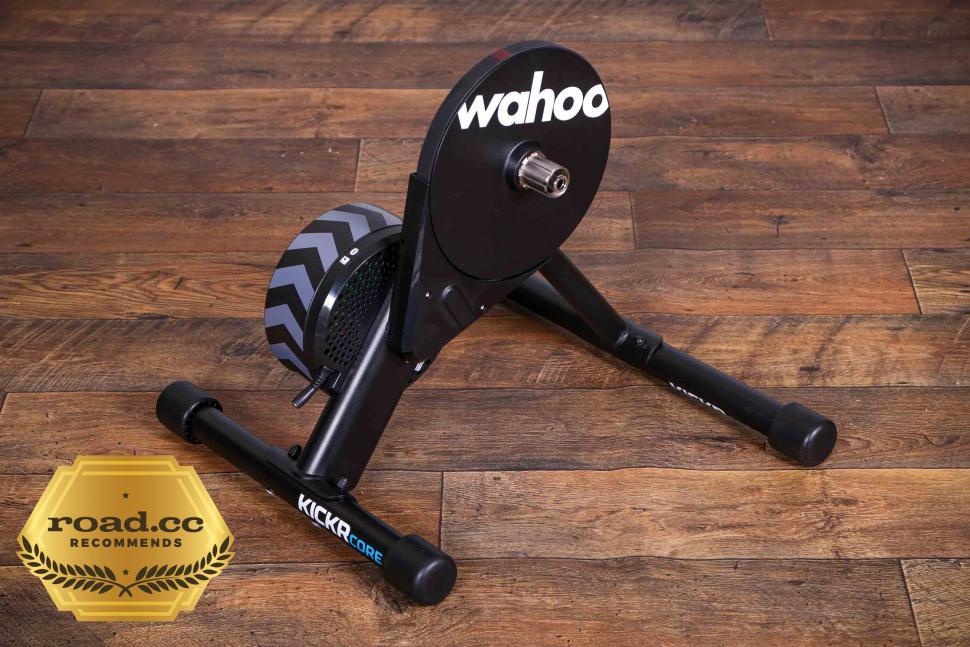 Wahoo Kickr Core Smart Trainer
Wahoo Kickr Core Smart Trainer£599.99
VERDICT:
Accurate, reliable and great value smart trainer
Reliable power recording
Excellent, fast-reacting ERG mode
Quiet
Stable
More than enough resistance (1,800W)
No carry handle
No side-to-side movement
Requires some (very simple) building
No cassette included
Weight:
18,000g
Contact:

This product has been selected to feature in road.cc recommends. That means it's not just scored well, but we think it stands out as special. Go to road.cc recommends
At road.cc every product is thoroughly tested for as long as it takes to get a proper insight into how well it works. Our reviewers are experienced cyclists that we trust to be objective. While we strive to ensure that opinions expressed are backed up by facts, reviews are by their nature an informed opinion, not a definitive verdict. We don't intentionally try to break anything (except locks) but we do try to look for weak points in any design. The overall score is not just an average of the other scores: it reflects both a product's function and value – with value determined by how a product compares with items of similar spec, quality, and price.
What the road.cc scores meanGood scores are more common than bad, because fortunately good products are more common than bad.
- Exceptional
- Excellent
- Very Good
- Good
- Quite good
- Average
- Not so good
- Poor
- Bad
- Appalling
The Wahoo Kickr Core Smart Trainer is the cheapest direct-drive offering in the Wahoo range, but sacrifices very little in terms of functionality when compared with its £1,000-plus competitors. In use it feels smooth and stable while providing accurate and reliable data however hard you push it, and the ERG mode is one of, if not the best out there. While it's not cheap, for a direct-drive turbo it's excellent value, and my recommendation for anyone asking which they should buy.
The Kickr Core is Wahoo's mid-range offering, fitting in below the Kickr V5 (£999.99) and above the Kickr Snap (£429.99). While it's the cheapest direct-drive turbo trainer in the Wahoo range, it still shares many of its features with its more expensive big brother.
> Find your nearest dealer here
Let's start by taking a look at the physical unit. The Kickr Core's direct-drive design uses a belt drive to transfer your power from the cassette to a 5.4kg flywheel that's controlled by an electromagnetic resistance unit. That's smaller than the 7.3kg flywheel weight you'll find on the latest Kickr V5, but a similar size to the ones you'll find on previous generations of the full size Kickrs from 2016 and 2017.
What this means is that the Core can simulate gradients up to 16%, and generate up to 1,800 watts of resistance. Yes, that's less than the 22% and 2,200W capability of the V5, but there aren't many riders who will be troubling those kinds of numbers, so it's more than sufficient for the vast majority.
Despite weighing 4kg less than the V5 (18kg vs 22kg), the Core feels more cumbersome to move about as it doesn't feature a handle. It's not exactly what I'd call portable, but then not many direct-drive trainers are.
It should also be noted that the Core doesn't ship with a cassette, so that will be about £40 of additional outlay.
The Core comes in the box in a few pieces, with the horizontal supports requiring bolting on with two bolts apiece. There's a small spanner included so there's no need to worry about a lack of tools, and this isn't some form of flat pack furniture mental torture, it's obvious where the relevant pieces go, and you can get it built up in under five minutes.
For storage, the front and back legs come together, making it slightly smaller – a similar size to a folded Tacx Neo/Neo 2T.
Also in the box you get all the necessary bits for quick releases and thru-axles, so whatever you're riding (within reason) should fit fine. However, the trainer has been optimised for use with standard 700C road wheels without the use of a riser block under your front wheel, and doesn't feature changeable heights like on the V5. This means that if you have smaller wheels, 650B, for example, or a mountain bike with 26in wheels, then as long as it's 12x142/148mm or 130/135mm quick release it'll still work fine. Though you might want to buy a riser block so you're not constantly riding downhill...
Like Elite's Direto XR, the Neo 2T and the latest Kickrs, the Core is natively compatible with thru-axles, which means the hole is big enough to use your bike's rear axles. For me this is a big draw to purchasing a Core over a Neo 2, for example, which can now be found for the same price but requires adaptors for thru-axle use, which feels somewhat like an afterthought.
Power measuring accuracy
Wahoo claims that the Core has a power recording accuracy of +/-2% which is competitive at this price point. That's slightly better than the 2.5% of the Xplova Noza S, which is almost identical in both design and price, and the same as on the more expensive Saris H3.
> 12 reasons why you should buy, and use, a power meter
The £1,000 flagship models do outperform the Core in this area, with typical accuracies of +/-1%, while also not requiring spin-down tests. On the Core a spin-down is a quick process, taking about 30 seconds (after a 10 to 15-minute warm-up), in either the Wahoo app or training software of your choice – Zwift, for example. I found that once calibrated, the Core tracked my ever reliable Quarq power meter within a few watts for a fortnight at a time, with recalibration only required when I moved the trainer, so it wasn't much of a hardship.
Online platform pairing
As with nearly all the latest trainers, you can pair this up with all of your favourite online platforms such as Zwift, The Sufferfest, TrainerRoad, Rouvy, RGT and so on, via Bluetooth, ANT+ and ANT+ FE-C.
I found the connection to multiple devices very reliable, with no annoying Bluetooth gremlins which seemed to plague turbo trainers of old. The Kickr Core also supports simultaneous Bluetooth connections, which meant that I could broadcast the power and cadence numbers to both my laptop and Wahoo bike computer.
In use
In use, the trainer is as near silent as you can get. It's certainly quieter than a bike's drivetrain, your average fan, and the Tacx Neo 2 that I had it set up next to. The flywheel is well balanced, too; combine that with the wide base and it results in minimal floorboard shaking which downstairs neighbours will no doubt be grateful of.
Speaking of fans, the Core is compatible with the rest of the Wahoo ecosystem, so it'll pair with the Headwind fan or Kickr Climb system.
Power comparisons
Time for some graphs – what trainer review would be complete without some power comparisons?
Zwiftly does it
First up, we have a Zwift ride where I wanted to compare the power numbers coming from the trainer vs my crank-based Quarq power meter, which I've found to be about as close to an industry standard in this area as you can get. I deliberately selected a lumpy route and varied my cadence.
The results of this are positive. We can see the two lines track each other very closely, with the Kickr Core measuring slightly lower. This 0.97% lower reading is just as we would expect, and can certainly be accounted for by drivetrain losses. In all of the hours of data I've reviewed during testing I am yet to come across a drop out in either power recording or cadence from the trainer, which is an issue that Dave had with the V5 before some software updates.
On longer activities it was also good to see no discernible temperature drift – this is where the trainer starts amplifying power numbers as it gets hot. I found that even on hour-long slogs up the alp at max effort the Wahoo consistently read the same as my Quarq from cold right until the bitter end.
Interval break
Next up, a snippet from an interval session testing out the trainer's ERG mode. I started with a 10-minute ramp which, as I would expect, the Core tackled with no issues, followed by a free ride – hence why my power was all over the place – and then into a 20-minute effort, varying my cadence between 55rpm and 110rpm every two minutes.
Firstly, you can see that the trainer doesn't overshoot the target wattage (same readings from Quarq) which is impressive.
Secondly, the trainer reacts quickly which was even more apparent on shorter intervals, and I was able to complete a 30/30 session (30 seconds hard, 30 seconds easy) which I could never do on an Elite Suito or Direto XR due to them taking an age (15 seconds) to normalise at the target wattage; the Core did it in less than 5 seconds.
Lastly, you can see that despite my deliberately erratic cadence, the trainer was able to hold me at my target wattage. I like to include this test, as often ERG mode can struggle with low cadence efforts, but here you can see that the Core, despite being a little more wobbly during the low cadence bits, kept me within 5W of my target wattage at just 55rpm, which is once again impressive.
Mini sprints
And then, just to double check the accuracy, some mini sprints.
Once again the two power figures are very close and within 3%. This is where we often see some discrepancies, but no issues with the Core providing reliable and accurate data.
I also tried the trainer out of ERG mode for 'free' rides around Zwift and RGT, and found the Core's performance faultless. Granted, I'm not the heaviest rider, but max 1,300W sprints proved no issue for the Core. The steepest climbs in Watopia also proved no issue, even on 100% realism, and this got me interested in how this could be the case with a maximum gradient simulation of 'just' 16%.
If I got right into the nitty gritty of that then we'd be here all day, so this article might be of interest. If you don't have time or can't be bothered to read it then the conclusion is that modern turbo trainers are vastly overpowered and it's highly, highly unlikely that you'll ever need anything more than what the Core offers.
> Buyer’s Guide: 10 of the best home trainers
On rolling courses the Core is quick to react to changes, giving you the most lifelike ride possible, and when it comes down to the all-important sprint, the wide base of the trainer is secure and rigid.
I did find that the trainer moved around a bit when really going for it out the saddle, but this was remedied by using a dedicated trainer mat.
Unlike on the more expensive Kickr V5 or Tacx Neo there isn't any lateral movement built in to the trainer; on short rides I could barely notice the difference, but on long rides I think this does contribute to bum fatigue. Using a squidgy matt will give you a few degrees of movement and help in this regard, and in fairness to the Core there are very few trainers at this price point that consider lateral movement.
Value
Priced at £699.99, the Core is £300 less than the V5, and, for all but a few heavy pro cyclists, will be more than sufficient. Yes, it lacks a cassette, auto calibration, and rocker feet, but those are rather minor niggles, with all the important bits such as providing enough resistance, build quality and an excellent ERG mode all present and correct.
At rrp it's cheaper than the Elite Direto XR and Saris H3 mentioned earlier in the review. Those can now be found online for a similar price, but in my opinion the ERG mode is better on the Core than Elite's offering, which was also noisier, and we found the H3 slightly less reliable with its cadence readings. (And the Core can also be found for less than its rrp online – £589 cheapest at the time of writing.)
You might also be able to find a Tacx Neo 2 for a similar price these days; that was a flagship unit when it was released and is still very good. It also has a motor to drive the freewheel on descents and 'road feel' capabilities. For me, those don't outweigh the added hassle required with a thru-axle bike, but if you are running quick releases then the Neo 2 should be a consideration if you can find it for the same price.
Conclusion
Overall, the Core is brilliant, doing all the basics exceptionally. It's quiet, accurate and reliable as well as being easy to set up and connect. It's missing extremely little of the functionality of £1,000 trainers and outperforms turbos of a similar price.
Note: the original value score and conclusions were made based on the rrp, and the Wahoo Kickr Core is currently discounted by £100.
Verdict
Accurate, reliable and great value smart trainer
road.cc test report
Make and model: Wahoo Kickr Core Smart Trainer
Size tested: n/a
Tell us what the product is for and who it's aimed at. What do the manufacturers say about it? How does that compare to your own feelings about it?
Wahoo says: "The KICKR CORE delivers a realistic, accurate, and quiet indoor training experience by using the proven flywheel technology and advanced algorithms of Wahoo's legendary indoor bike trainers. The KICKR CORE indoor trainer is built with the durability to withstand all of your indoor training sessions"
It's aimed at anyone wanting to take their indoor training seriously and benefit from using a direct drive turbo, the max resistance of up to 1,800W is more than enough for nearly everyone in the world and it performed excellently whilst being cheaper than many of its competitors.
Tell us some more about the technical aspects of the product?
Wahoo lists:
Dimensions (legs open): 20"L x 23"W x 19"H
Dimensions (legs closed): 9"L x 23"W x 21"H
Weight (unboxed): 40 lb
Rear Wheel Size: 24" RD / 24" MTB / 650c RD / 26" MTB / 700c RD / 650b MTB / 29" MTB
Hub Types: 130/135mm QR, 12x142, and 12x148 Thru Axle
Adapters: Included
Drivetrain: Cassette not included.
Requires Purchase/Installation of New Cassette: 8/9/10/11 Speed SRAM/Shimano
KICKR CLIMB: Compatible Yes
RPM Cadence: Not Included
Front Wheel Block: Not Included
Resistance Type: Electromagnetic
Accuracy: + / - 2%
Wireless Software Updates: Yes
3rd Party Power Meter Support: Yes
Connectivity: ANT+, ANT+ FE-C, and Bluetooth
Devices: iOS, Android, PC (Mac and Windows)
Max User Weight: 250 lb
Power Requirements: 100-240V5A 50-60 Hz
Flywheel Weight: 12 lb
Maximum Simulated Grade: 16%
Maximum Power Output: 1800W
Rate the product for quality of construction:
9/10
Rate the product for performance:
9/10
Very good – accurate and reliable.
Rate the product for durability:
9/10
No issues at all on the test device or my own device of two years; Wahoo customer service is also exceptional.
Rate the product for weight (if applicable)
8/10
18kg is pretty hefty but I think this is as light as you realistically want it while still having a nice big flywheel to make riding as lifelike as possible and to provide adequate resistance. There are plenty heavier out there.
Rate the product for comfort (if applicable)
7/10
It's stable and rigid, and though it doesn't offer any lateral movement like the new Kickr V5 or Tacx Neos, that can be remedied by a plush turbo mat that will allow it to rock slightly, for relatively little expense.
Rate the product for value:
8/10
It's not cheap, but for a direct-drive trainer you can spend a lot more and get a lot less. It's well worth the money.
Tell us how the product performed overall when used for its designed purpose
Very well, it was excellent on free rides, structured sessions with both short and long intervals, and handled varied cadence well as well as sprint efforts.
Tell us what you particularly liked about the product
It's easy to jump on and use.
Tell us what you particularly disliked about the product
Bit of a pain to move about with the lack of handle.
How does the price compare to that of similar products in the market, including ones recently tested on road.cc?
As mentioned in the review, at RRP its rivals such as the Tacx Neo 2T (£1,199), Saris H3 (£849.99) and Kickr V5 (£999.99) all cost more, and it gives them a serious run for their money. It outperforms trainers of a similar price – for example, the Xplova Nova S (£699.99) isn't as accurate, and the Elite Direto XR (£824.99) doesn't perform as well in ERG mode and is noisier.
Did you enjoy using the product? Yes
Would you consider buying the product? Yes – I have in fact.
Would you recommend the product to a friend? Absolutely
Use this box to explain your overall score
It's an excellent product that takes a lot of the stress and hassle out of indoor training. Throughout the review I've been comparing it to £1,000-plus trainers which it stacks up very well against and is clearly punching above its weight. It's quiet, accurate, reliable and well built. It's very close to being the first product I give a 10, but to get that I'd want to see it have a cassette included, a handle or some way of making it easier to move about, and a little lateral movement – that would make it very close to perfect.
About the tester
Age: 23
I usually ride: Specialized venge pro 2019 My best bike is:
I've been riding for: Under 5 years I ride: Every day I would class myself as: Expert
I regularly do the following types of riding: road racing, time trialling, cyclo cross, commuting, club rides, sportives, general fitness riding, mtb,
Jamie has been riding bikes since a tender age but really caught the bug for racing and reviewing whilst studying towards a master's in Mechanical engineering at Swansea University. Having graduated, he decided he really quite liked working with bikes and is now a full-time addition to the road.cc team. When not writing about tech news or working on the Youtube channel, you can still find him racing local crits trying to cling on to his cat 2 licence...and missing every break going...
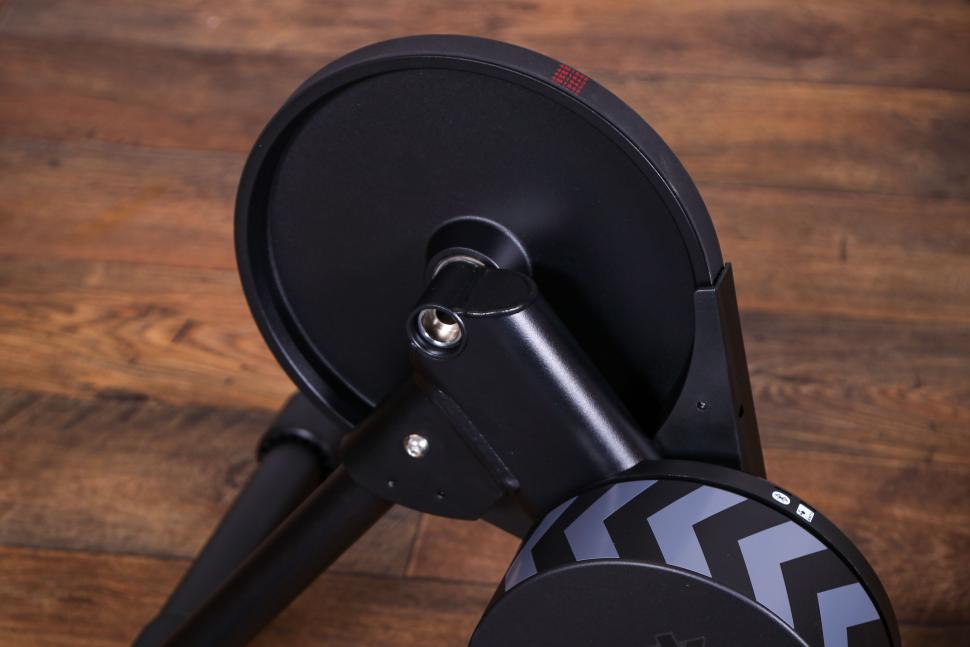











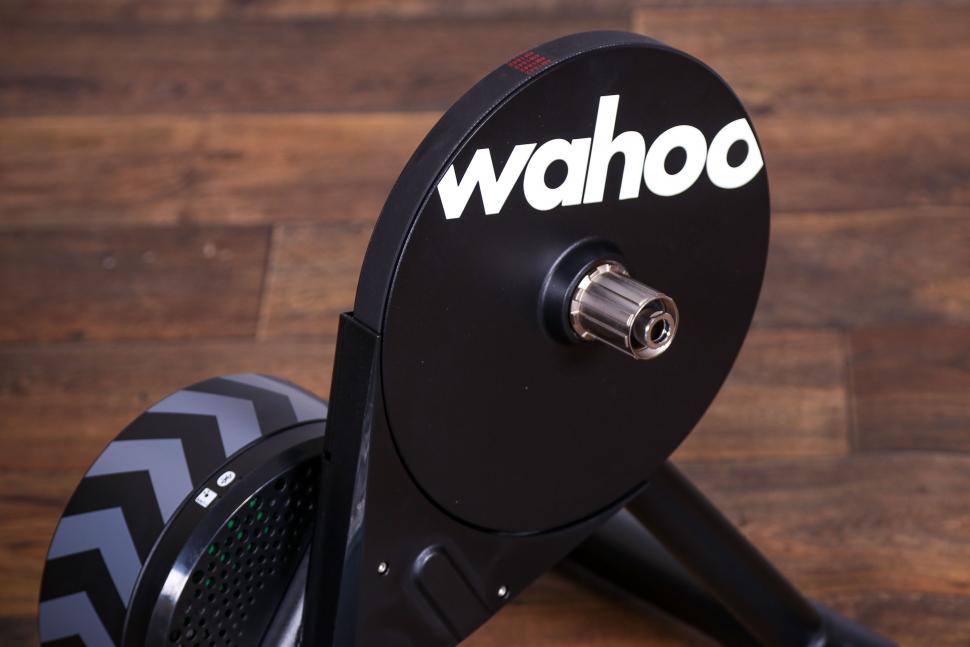
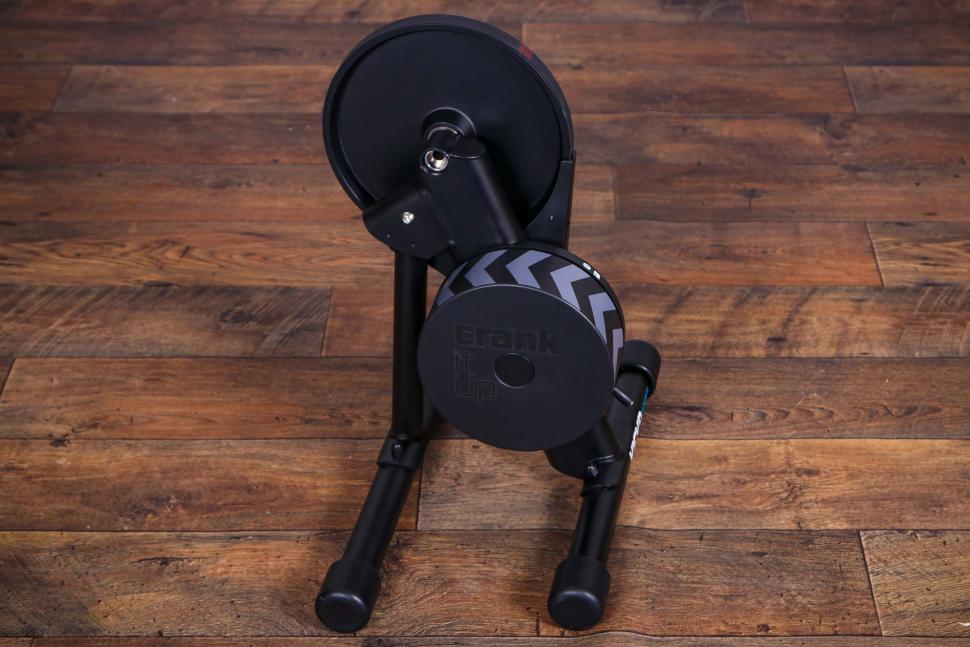




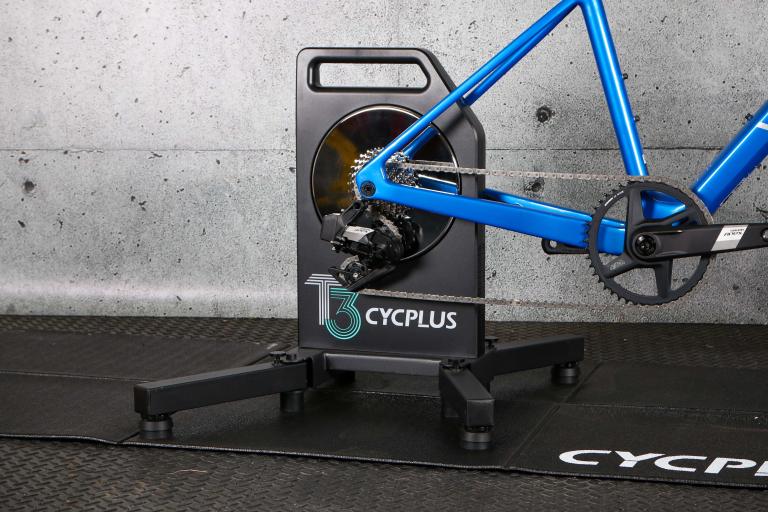
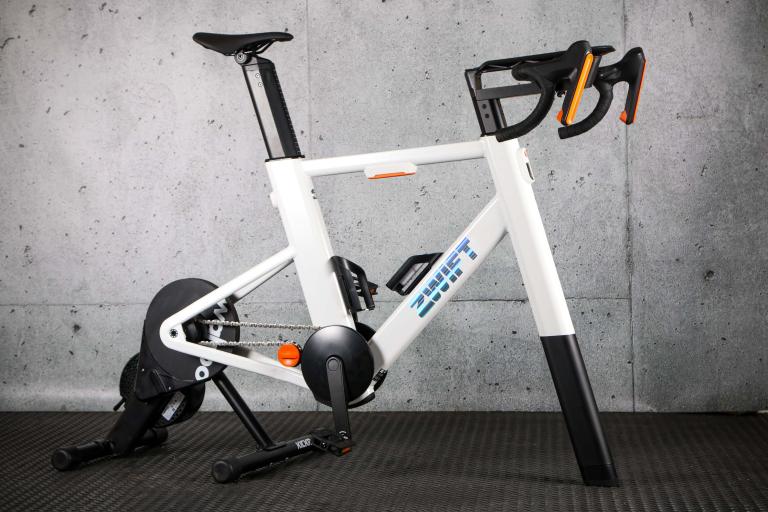

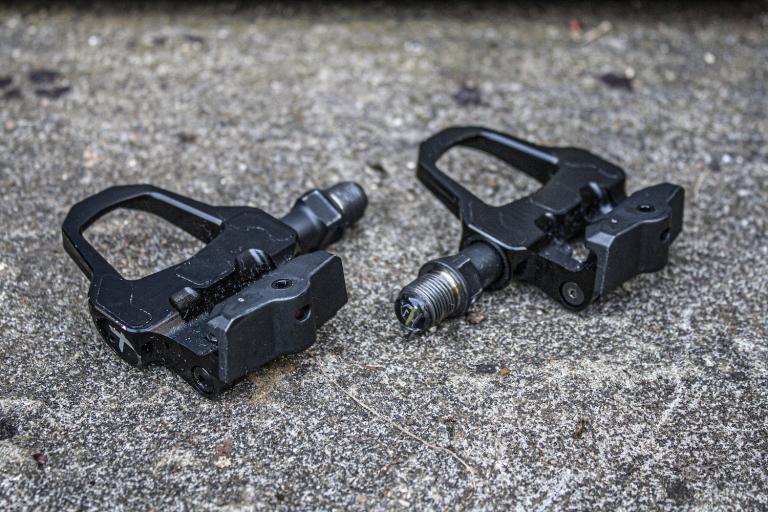
The council has produced various iterations of the plans, responding to feedback and suggestions. They claim it isn't possible to produce a plan...
Whichever way you look at it, this is a scam.
Do floating bus stops work?...
Right, well that could be handy: I'm going round with my baseball bat to have a quiet chat about ownership. You can use their names to see if they...
Yeah, at this point, I can't see much hope for the U.S. people. Trump loves stupid people and it seems like stupid people love him.
Years ago, friends and I drove in two cars to a church for a wedding rehearsal. As we drove down the drive, we passed a "CHILDREN - DRIVE SLOWLY"...
I can only speak about my frame.
That's a terrible outcome. RIP for the victim. The length of driving ban plus the need for a retest at least is something.
I was wondering why the prosecutor used the word ordinary rather than competent. The two seem completely different to me.
The bus should have been bigger and brighter coloured. How are drivers expected to spot a bright yellow double decker bus on our roads?...